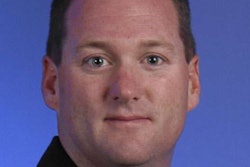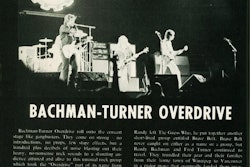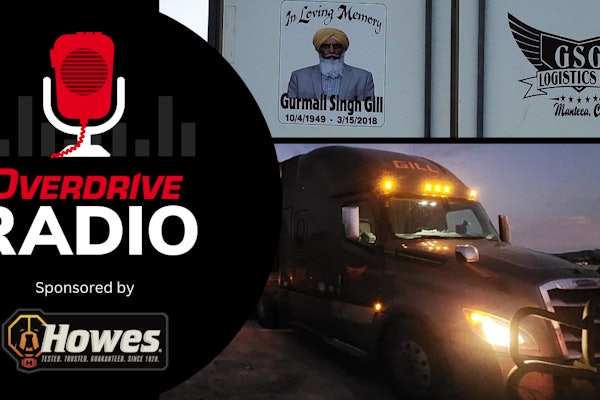Line of Sight
Using mirrors effectively will help avoid accidents and minimize damage to your rig
No component on your truck is more crucial to your safety on the road than your mirrors. “Proper mirror usage is fundamental,” says Stephen Adams, a May Trucking company driver with a million miles of safe driving with the carrier. “I use every mirror at my disposal all the time.”
May Trucking driver Stephen Adams positions his mirrors to ease use for maximum safety.
Basic mirror configurations include a flat mirror and a convex mirror on both the driver and passenger sides of your truck. Many truckers, especially flatbed haulers, add a spot mirror or two on their fenders to gain additional visibility.
Tilden Curl, owner of Tecco Trucking, who pulls his own flatbed trailer, says factory installed automatic mirrors are sufficient for viewing “if you’re a conscientious driver.”
Before Adams sets his mirrors, he gets in a comfortable driving position to make sure that viewing his mirrors over long highway driving won’t tire him out or cause pain. His goal is to eliminate blind spots.
He sets his mirrors to see the side of his cab and the front corner of his trailer. With the top flat mirror, he aims to see the lower part of his trailer, drive tires and as much of the top portion of the trailer as possible.
Adams sets the convex mirrors on both sides to give him a wide view of his tractor and trailer. His passenger fender spot mirror shows the corner of his tractor hood and a wide span to the right of his rig.
Curl uses his convex mirrors to see the area from the front of his sleeper outward about one and a half highway lanes. His flat mirrors display from where the convex mirror field of vision leaves off from the front of the trailer backward. “There’s no reason to have a blind spot,” if you position mirrors correctly, he says.
Using your mirrors requires constant vigilance. Adams says he looks at his mirrors every three to five seconds. “I follow a sequence of wheel left, head left, wheel right, head right,” says Adams, who operates a website at www.truckersteve.com. “Anywhere my hands are going, my head is going.”
Adams uses his mirrors to show him what’s happening in highway lanes next to him and as far behind him as he can see. He says he uses his mirrors to anticipate problems and ways to escape them. “My mirrors help me protect my outs,” he says. “I’m always planning ahead of time to see where I can go in case something goes wrong.”
That’s especially true when Adams does spot checks in his mirrors to watch for dangers when he’s turning. In addition, he monitors the mirrors on the opposite side. Those checks have helped him avoid numerous accidents, including a recent encounter when a driver ran a red light.
Owner-operator Tilden Curl manipulates his mirrors to view his flatbed loads, as well as his tires and trailer.
Curl watches his mirrors more closely when making lane changes, looking for four-wheelers. “I give drivers an extra two to three seconds before I make a move to really observe what’s in the mirrors,” he says.
“You can use your mirrors to assess the condition of your equipment,” adds Curl, who sometimes will move his mirrors to do so. “The other day I saw a strap had loosened and I was able to secure it.” Curl also uses his mirrors extensively when backing up. He’ll shift his view between mirrors when maneuvering into a dock or tight space, as well as getting out of his truck to look. Never “assume nothing’s there,” he cautions.
“No Zones,” or blind spots, are areas around your rig where objects disappear from view. Many accidents, both on the road and off, occur because of these low-visibility locations.
MIRROR POSITIONING TO REDUCE BLIND SPOTS
The rear blind spot extends several feet directly behind your trailer. Immediately in front of your tractor is a blind spot that may make it difficult to see a four-wheeler’s brake lights.
No Zones are potential blind spots for truckers.
No Zones on the sides of your tractor-trailer are places where cars can linger for extensive periods. Properly positioned mirrors can significantly reduce blind spot geography, but you should constantly look at your mirrors for traffic in these areas.
You can set up a mirror check station on your own or through your carrier to help in positioning your mirrors for maximum visibility.
• A station can be set up on any flat ground at least 30 feet wide and 80 feet long.
• Stop your tractor with your mirrors even with a chalk line.
• Position objects such as boxes even with and to the right of your trailer’s nose end, on the driver’s side of your trailer 75 feet from the chalk line and on the passenger side of your trailer 35 feet from the chalk line.
SIZE MATTERS
Flat and convex mirrors need to be certain sizes to provide adequate visibility.
Liberty Mutual recommends flat mirrors with a minimum reflective area 5 inches wide and 10 inches high.
The convex mirrors should have a minimum reflective area of 25 square inches, 5 inches by 5 inches or 6 inches in diameter. The radius of the curvature should be between 20 inches and 30 inches. A convex mirror reflects a distorted image, with a smaller radius reflecting a greater distortion.









